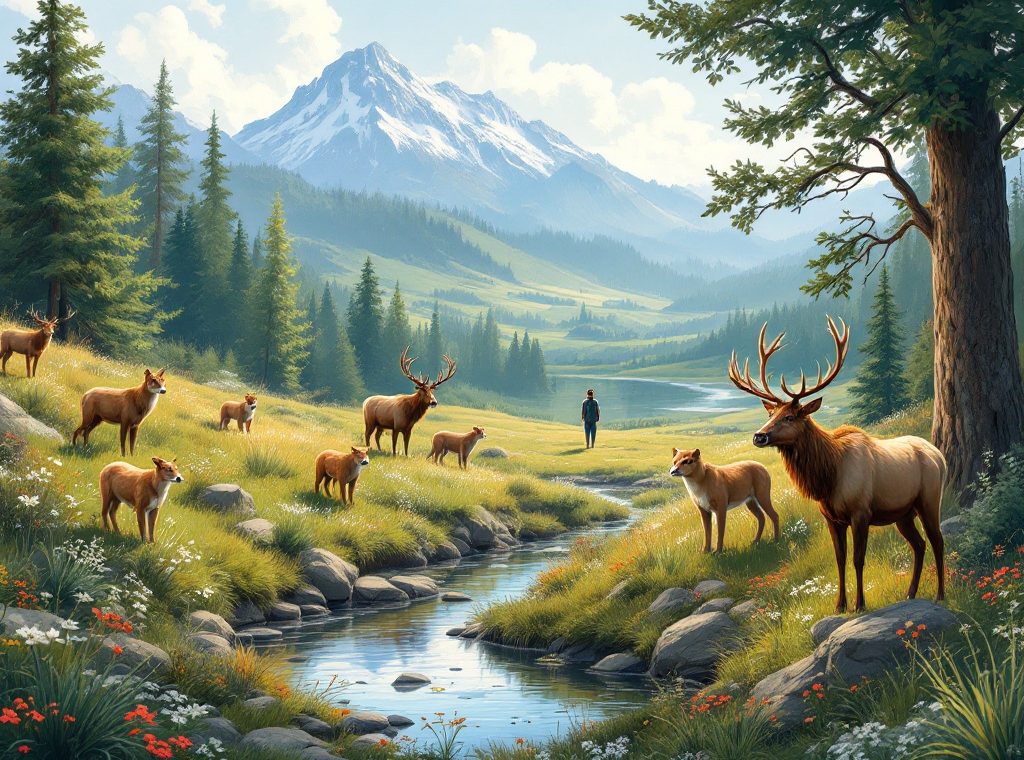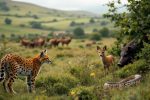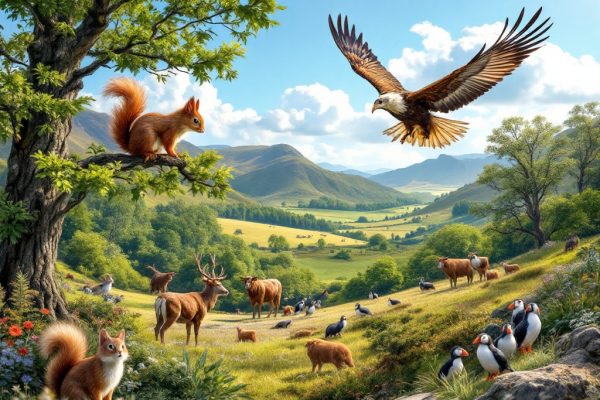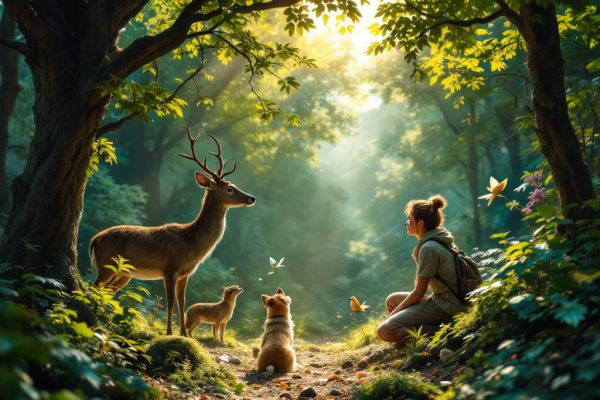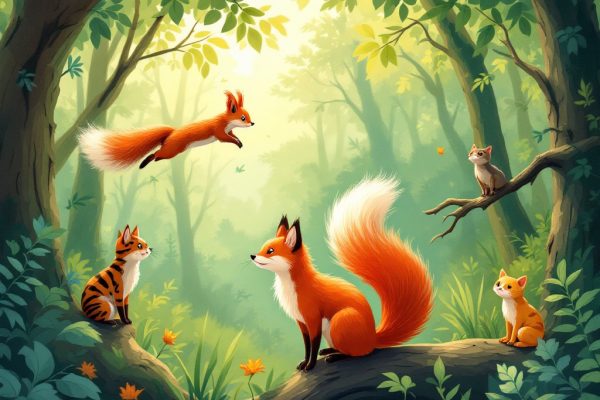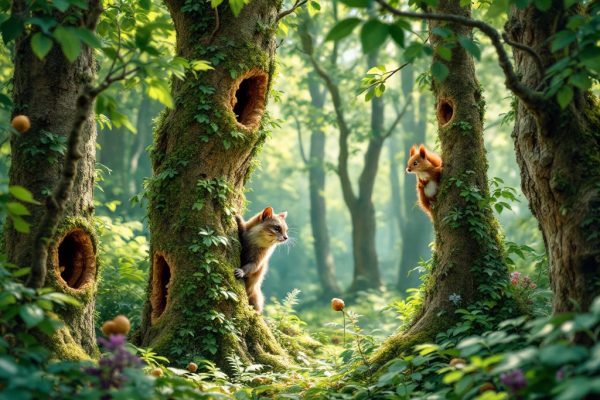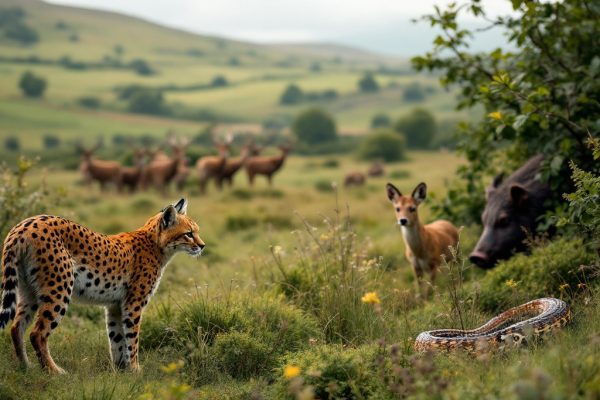Why are Wild Animals Afraid of Humans: Top Things to Avoid when Visiting Lothian
Did you know that wild animals, from elk to mountain lions, often fear humans more than their natural predators? Discover the surprising reasons why wildlife perceives us as a threat, and how this fear impacts their behavior, from abandoning water sources at the mere sound of human voices to altering predator-prey dynamics. Explore how human activity disrupts ecosystems and learn practical tips for minimizing our impact when visiting areas like Lothian, ensuring both our safety and the preservation of these incredible creatures. Read on to understand how we can coexist peacefully with the natural world.
Important information

- Wild animals have an instinctive fear of humans, often viewing us as predators due to hunting and habitat destruction.
- This fear is more pronounced than their fear of natural predators like lions, impacting their behavior and survival.
- Human sounds, especially voices, can cause animals to abandon essential resources like water sources.
- Animals’ fear of humans is learned and passed down through generations, influencing their interactions with us and human-dominated environments.
- Respecting wildlife through quiet observation, maintaining distance, and adhering to park guidelines is crucial for their well-being and the preservation of ecosystems.
Why Are Wild Animals Afraid of Humans?
Wild animals instinctively avoid humans, recognizing our long history as predators.
We hunt more extensively than most other predatory animals, posing a significant threat.
This innate fear dramatically impacts wildlife behavior and survival.
Animals often display greater fear towards humans than other predators, sometimes even abandoning essential resources like water sources.
The mere sound of human voices can trigger flight.
This learned aversion is passed down through generations, shaping wildlife interaction with humans and human-dominated landscapes.
These behavioral adaptations have profound consequences for conservation strategies.
The Instinctual Fear of Humans
Wild animals instinctively avoid humans, perceiving us as a threat. This learned fear often stems from associating us with dangers like hunting and habitat destruction. To survive, they react by fleeing or hiding.
Humans as Perceived Predators
Wild animals often perceive humans as predators. This is mainly because of our upright posture and bipedal gait, which triggers a fear response similar to that of prey animals. Research suggests this fear is both learned and evolutionary. Animals associate humans with threats like hunting and habitat destruction. As a result, they actively avoid us out of fear.
How Fear of Humans Exceeds Other Predators
On the savanna, mammals surprisingly fear humans more than lions, their natural predators. This heightened fear is a direct result of human activities like hunting and habitat destruction, which upset the natural balance. Consequently, prey animals often prioritize avoiding humans, even if it increases their risk of encountering a lion. This human-induced fear has significant ecological repercussions.
Impact of Human Presence on Animal Behavior
Human activity significantly alters animal behavior, disrupting established routines and impacting entire ecosystems. Animals often respond with fear, exhibiting behaviors like fleeing, hiding, or increased vigilance. These disruptions have far-reaching consequences. For instance, the sound of human voices can cause animals to abandon essential resources like waterholes 40% faster, forcing them to seek alternatives and exposing them to new dangers and heightened competition. The chronic stress of human disturbance also reduces reproductive success and overall population health. Moreover, these behavioral shifts affect predator-prey dynamics.
Predators might avoid human-populated areas, allowing prey populations to flourish in these havens.
Conversely, some prey species abandon their usual safe zones due to human presence, increasing their vulnerability to predators elsewhere.
Ultimately, such behavioral changes can destabilize ecosystems and threaten biodiversity.
Behavioral Changes in Ungulates
Hoofed mammals, such as deer and elk, exhibit a range of reactions to human presence. Animals with limited human contact often flee immediately upon detecting a person, whether by sight or scent.
However, in areas with frequent human interaction, some ungulates become habituated, displaying less fear and altered responses. Instead of rapid flight, they may react more slowly or even approach humans. This habituation can significantly impact their behavior and ecological dynamics.
Predatory Animals and Human Interaction
Large predators, such as mountain lions and wolves, might stalk humans for a few key reasons. A primary motivator is hunger, especially when their usual prey is scarce, leading them to consider humans as a potential food source. Stalking can also be a defensive tactic employed by a threatened predator. This complex behavior isn’t driven solely by fear, but also by a powerful combination of instinct and self-preservation.
Species Abandoning Waterholes Due to Human Voices
Animals bolt from waterholes 40% faster at the sound of human voices compared to other noises.
A remarkable 95% of species exhibit this powerful fear response, prioritizing safety over hydration when they perceive us as a threat.
This avoidance disrupts their natural routines and can negatively impact both individual animals and entire populations, limiting their access to crucial resources like water.
Common Wildlife in Lothian and Their Responses to Humans
Lothian’s deer, elk, and moose are highly sensitive to human presence, adapting their feeding habits accordingly. Research indicates they bolt from watering holes 40% quicker upon hearing human sounds, prioritizing escape over sustenance when danger is perceived.
Lothian’s large predators – grizzly bears, wolves, and mountain lions – actively avoid humans. Studies reveal these animals are twice as likely to flee at the sound of human activity, disrupting their hunting patterns and territorial behavior.
Bird reactions vary. While some species, like sparrows and game birds, adapt to human presence in developed areas, others maintain a significant distance. Consequently, human activity can disrupt the nesting and feeding habits of more sensitive avian populations.
Ungulates: Deer, Elk, Moose
Lothian’s deer, elk, and moose are inherently wary of humans, instinctively fleeing any approaching person.
Predators: Grizzly Bears, Wolves, Mountain Lions
In Lothian, large predators such as grizzly bears, wolves, and mountain lions typically avoid humans. This behavior is often driven by learned fear. However, hunger or habituation can sometimes lead these animals to stalk people. Their past interactions with humans undoubtedly influence their reactions.
Birds: Passerines and Game Birds
Robins and pheasants, common birds in Lothian, instinctively fear humans. This inherited survival trait protects them by encouraging avoidance of perceived threats.
Top Things to Avoid When Visiting Lothian to Protect Wildlife
Respect wildlife by maintaining a safe distance and avoiding sudden movements, loud noises, and flash photography. Adhering to park guidelines minimizes human disturbance.Stay on marked trails and refrain from disturbing animal homes, such as nests or dens. Learning about local ecosystems and animal behaviors demonstrates respect for their habitats.For your safety and the safety of the animals, never approach, feed, or chase them. Avoid touching them and report any unusual behavior to park authorities.
Minimizing Human Disturbance
Respect wildlife by minimizing noise and keeping a safe distance. Avoid approaching animals and disturbing their space, especially during sensitive periods like mating or nesting seasons. Observe from afar with binoculars or spotting scopes, and stay on designated trails and in viewing areas for your safety and the animals’ well-being. Never feed them, as this disrupts natural behaviors and creates unhealthy dependence on humans. Proper waste disposal is essential to avoid attracting animals and preserving their habitat.
Learning about the local fauna and their habits enhances your wildlife experience while ensuring their protection. Understanding their needs helps minimize disturbances and ensures a positive interaction for everyone.
Some of the species found in areas such as Lothian include:
- deer,
- elk,
- moose,
- grizzly bears,
- wolves,
- mountain lions,
- birds.
Understanding and Respecting Wildlife Habitats
Respecting wildlife is crucial when visiting Lothian, as it helps preserve the area’s delicate ecological balance. Disturbing natural behaviors can cause stress to animals, disrupting their essential feeding and breeding patterns. Human habituation can also lead to dangerous encounters for both humans and wildlife. By respecting wildlife, we contribute to vital conservation efforts, preserving Lothian’s natural beauty and fostering a harmonious relationship between humans and nature. Maintaining a safe distance allows animals to flourish undisturbed, benefiting both the wildlife and visitors who come to appreciate them. For example, observing wildlife from afar minimizes our impact, allowing us to witness natural behaviors without interference. This responsible approach ensures the continued health of Lothian’s wildlife populations and enhances the visitor experience by providing authentic encounters with nature.
Safety Precautions for Wildlife Encounters
Observe wildlife from a safe distance, refraining from approaching or feeding them. Feeding disrupts their natural foraging behaviors.
Minimize loud noises and sudden movements to avoid startling the animals.
Refrain from using flash photography, as it can disturb and disorient them.
By respecting park rules and guidelines, we ensure a safe and harmonious coexistence with wildlife.

